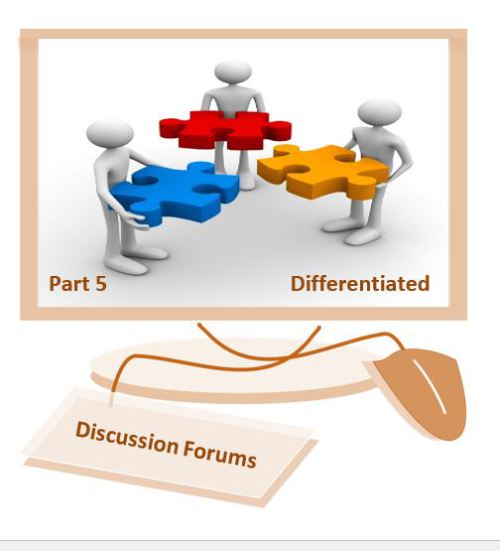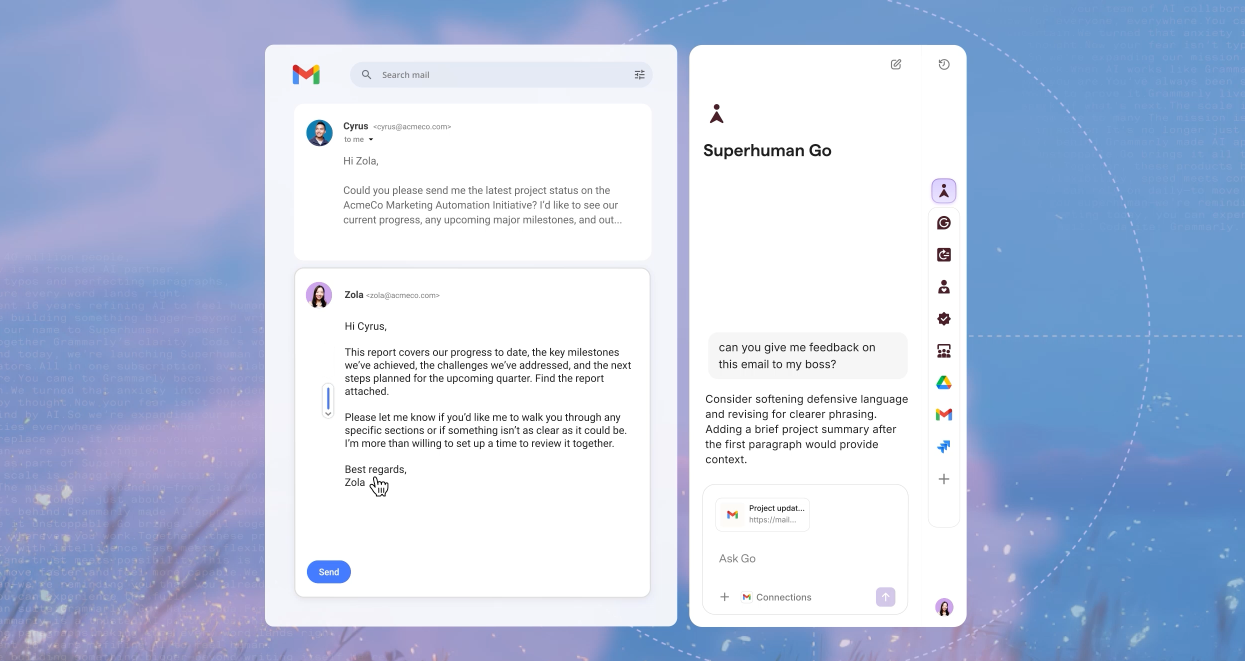12 Tech Ideas and Tools for Differentiated Learning, Part 5: Online Discussions


Welcome to the fifth post in a series designed to support the use of technology for differentiated learning… in and beyond the PBL classroom. Before reading, please take a moment to subscribe by email or RSS and also give me a follow on Twitter at mjgormans. I promise you will find some great information coming your way in the posts that follow…So sign up now and please pass this on with a retweet. – Mike Gorman (https://21centuryedtech.wordpress.com/)
I do really hope you enjoyed the past four posts involving Differentiated Instruction. I do hope you have found some valuable resources and ideas. In this post, I wish to take a look at how the use of discussion forums can help differentiate the learning in the classroom. Did you know that discussion forums can put all students on a new kind of equal footing? It’s true, discussion forums allows individuals to express their ideas while also students to write toward their area of strength. Many times that in-class discussion seems to focus on those students that are verbal and confident to speak out. I have found in an online discussion forum, the interaction dynamics can really change. Student who never participate in class suddenly have the opportunity to radiate brilliant ideas and provide wonderful thought to a discussion. The feedback they get from their peers and teacher can be powerful. The confidence gained often allows the student to transfer this online interaction to the real classroom discussion and interaction. As we begin to promote discussions in the online world we must think outside the box and provide an environment that is engaging for all students. It is important to also align these discussions to both content and process standards. I also find that a rubric for a discussions can come in handy. It is important to align the rubric to both the content and important process skills. In an online discussion students find that their ideas are valuable and enjoy seeing this alternative assessment to affirm this.
Before entering the world of online discussions it is important to talk about digital citizenship and responsibility with your students. They must understand that a online discussion is much different then talking face to face.It will also be important to decide on expected writing protocols. I have often found it important to stress that proper grammar is important in an educational forum, and it should be included on the rubric. Last, it must be decided what platforms will be used for the discussion forum. The best is always the school LMS (Learning Management System), or possibly even an area in a Google Doc. If using other web tools outside the district domain be sure to consult your school AUP (Acceptable Use Policy), along with website terms and privacy policies. Bringing online discussions to your classroom can really allow for a new type of student participation, while amplifying traditional in-class sharing. Please remember to think outside the box as you engage students in an online discussion or forum. Take a moment and try one of my twelve ideas and tools. I think as you reflect on each technique you will be able to see how they can bring different student interests and learning styles together, amplifying the DI in your classroom. If you missed a past DI article, I have those links provided below. I am certain you will enjoy the learning that becomes evident in your classroom online forums and discussion.
- Part 1: Tech Resources and Tools for Differentiated Learning … Reading
- Part 2: Tech Resources and Tools for Differentiated Learning … More Reading
- Part 3: Tech Resources and Tools for Differentiated Learning … Writing Process
- Part 4: 20 Tech Resources and Tools for Differentiated Learning … Writing Engagement
12 Tech Ideas and Tools for Differentiated Learning … Online Discussions
1. A formative tool – As a way to check understanding from class that day. This might be a temperature check and drive teacher facilitation and instruction the next day. Some times students will see others not understanding and give their own explanation. Many times we can all learn from the crowd.
2. A divergent tool – Students do not reply with answers… but new questions. The rule states that no one is allowed to answer a question… just pose new questions. What might the class do with this the next day?
3. A reflection tool -Students reply not giving a statement of content or material… but a reflective thought to show application & connection. Allowing for important meta-cognition can be powerful while engaging learning. Take a step up on Blooms!
Tools and ideas to transform education. Sign up below.
4. A launch and inquiry tool – No explanation or instruction… students are posed with a question or video that will cause thinking/questions that will be used the next day. Perhaps students just need to come with thoughts, questions, and ideas that they first express online and will relate to higher learning activities in class.
5. A connection tool – Students watch a video or do a reading that emphasizes what happened in class and they then make connections in their reply. It is important that the students be required to show the connection. A video might be used that demonstrates the math they learned in real life. How might students show that connection?
6. A mentor tool – An online expert could be a guest forum host to answer questions for student on a topic. This is a perfect opportunity to open the classroom up to real world connections and possibilities. Any mentors should be interviewed and approved by teacher and front office while following school guidelines.
7. A simulation tool – Thoughts and ideas could be posted on line by a famous person or character in a book. Students would reply showing content knowledge and application. Teachers will get insight on student understanding of important concepts.
8. A role play tool – Students are given characters in a book or history and interact in a discussion using their character role. Imagine the conversations that will happen and how a teacher can assess understanding at the same time.
9. A research tool – Students are asked to find one or two research links to share with each other. They give reasoning for the link they selected. A collection of student links or a Google Custom Search Engine for the class is built for everyone to use.
10. Student centered tool – Why not put students in charge of a forum? It might fit into their PBL project or promote content in the classroom. Having students in charge can give ownership and stress the importance of an academic forum and the scholarly ways they should be used.
11. A critique tool – Have each student post their writing, project plan, or reflective thoughts online.Have students respond using a filter provided by the teacher. This could be a filter based on grammar, content, or a possible area of a classroom rubric. Students can use statements such as I have, like, and wonder.
12. Student tutoring tool – I have seen teachers set up a discussion area for student questions regarding classroom concepts. Many teachers set these up so they can respond to students and soon find out that students begin to own the forum, providing insight and understanding even before the teacher.
I hope you enjoyed these ideas and tools for DI and online discussion forums. Please keep in mind that your students must be practicing proper digital citizenship and responsibility when interacting in a discussion online. Get parent permission and district authorization if needed. Enjoy the DI journey as your student engage in the discussion process!
cross-posted at 21centuryedtech.wordpress.com
Michael Gorman oversees one-to-one laptop programs and digital professional development for Southwest Allen County Schools near Fort Wayne, Indiana. He is a consultant for Discovery Education, ISTE, My Big Campus, and November Learning and is on the National Faculty for The Buck Institute for Education. His awards include district Teacher of the Year, Indiana STEM Educator of the Year and Microsoft’s 365 Global Education Hero. Read more at 21centuryedtech.wordpress.com.
